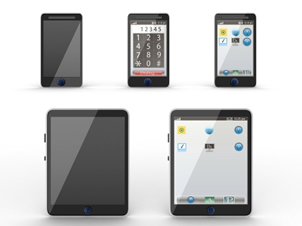Niemann-Pick Disease Overview
“The Canadian Chapter of the National Niemann-Pick Disease Foundation (CCNNPDF) does not engage in the practice of medicine. It is not a medical authority nor does it claim to have medical knowledge. This site is an educational service of the Canadian Chapter of the National Niemann-Pick Disease Foundation and is not meant to provide diagnostic or treatment advice. Information contained or suggested on this Web site does not constitute medical advice. For all information related to care, medication or treatment, the CCNNPDF recommends consulting a physician to determine if information presented is applicable. Please review these additional cautions about medical information provided on the Internet.”
Niemann-Pick Disease is one of a group of
lysosomal
storage diseases
that affect metabolism and that are caused by genetic
mutations. The three most commonly recognized forms are Niemann-Pick
Types A, B and C.
Niemann-Pick Types A and B, or Acid Sphingomyelinase Deficiency (ASMD)
Niemann-Pick Types A and B (NPA and NPB), also called Acid Sphingomyelinase Deficiency (ASMD), are caused by the deficiency
of a specific enzyme, acid sphingomyelinase (ASM). This enzyme is found
in special compartments within cells called lysosomes and is required to
metabolize a lipid called sphingomyelin. If ASM is absent or not functioning
properly, sphingomyelin cannot be metabolized properly and is accumulated
within the cell, eventually causing cell death and the malfunction of major
organ systems.
NPA and NPB are both caused by the same enzymatic deficiency and there is a growing evidence that the two forms represent opposite ends of a continuum. People with NPA generally have little or no ASM production (less than 1% of normal) while those with NPB have approximately 10% of the normal level of ASM.
The clinical prognosis for NPA and NPB patients is very different. NPA is a severe neurologic disease that leads to death by 2 to 4 years of age. In contrast, patients with NPB generally have little or no neurologic involvement and may survive into late childhood or adulthood. Type B individuals usually have enlarged livers and spleens, and respiratory problems are common. The enlargement of organs and the respiratory problems can cause cardiovascular stress and can lead to heart disease later in life.
There are approximately 1,200 cases of NPA and NPB worldwide with the majority being Type B or an intermediate form.
Niemann-Pick Disease Type C
Niemann-Pick Type C (NPC) is very different than Type A or B (ASMD). NPC
Patients are not able to metabolize cholesterol and other lipids properly
within the cell. Consequently, excessive amounts of cholesterol accumulate
within the liver and spleen and excessive amounts of other lipids accumulate
in the brain. NPC causes a secondary reduction of ASM activity, which led
all three types to be considered forms of the same disease.
|
There is considerable variation in when Type C symptoms first appear and
in the progression of the disease. Symptoms may appear as early as a few
months of age or as late as adulthood. Vertical gaze palsy (the inability
to move the eyes up and down), enlarged liver, enlarged spleen, or jaundice
in young children are strong indications that NPC should be considered.
It is common for only one or two symptoms to appear in the early stages
of the disease.
In most cases, neurological symptoms begin appearing between the ages of 4 and 10. Generally, the later neurological symptoms begin, the slower the progression of the disease. |

|
Mayo
Clinic podcast featuring Dr. Marc Patterson in a discussion about Niemann-Pick
Disease
|
| Marc C. Patterson, M.D. |
Type C Niemann-Pick Disease has about 500 cases diagnosed worldwide. It is believed, however, that the number of people affected by NPC is higher, but diagnostic difficulties do not allow an accurate assessment of the occurrence rate. NPC has been initially diagnosed as a learning disability, mild retardation, "clumsiness," and delayed development of fine motor skills. It is not uncommon for a family to spend several years seeking a diagnosis before NPC is identified.
NPC is always fatal. The vast majority of children die before age 20 (and many die before the age of 10). Late onset of symptoms can lead to longer life spans but it is extremely rare for any person with NPC to reach age 40.
Niemann-Pick Disease affects all segments of the population with cases reported from North America, South America, Europe, Africa, Asia, and Australia. However a higher incidence has been found in certain populations:
- Ashkenazi Jewish population (NPA and NPB)
- French Canadian population of Nova Scotia (type D – now considered a variant of NPC)
- Maghreb region (Tunisia, Morocco, and Algeria) of North Africa (NPB)
- Spanish-American population of southern New Mexico and Colorado (NPC)
Resources
- Division of Clinical and Metabolic Genetics, Hospital for Sick Children (SickKids), Toronto
- Links and other NPD Resources
- Other NPD organizations
- Organizations addressing other lysosome storage diseases
Pick's Disease is sometimes confused with Niemann-Pick Disease but it is a different disease.

Using a tablet or mobile device? To improve compatibility between our web site and the growing hand held technology we have provided quick links below for those whose device is not compatible with the navigation pane (left) drop down menus.
|
How Is It Diagnosed?:
-
|

|
[June 28, 2010 mem; June 28, 2013 blg]
